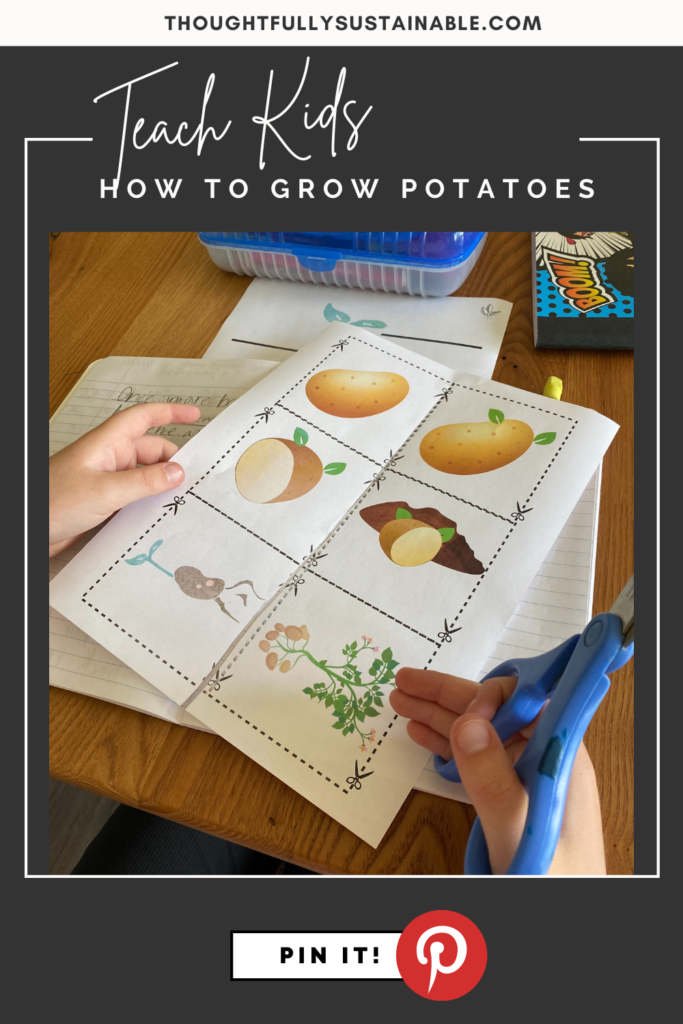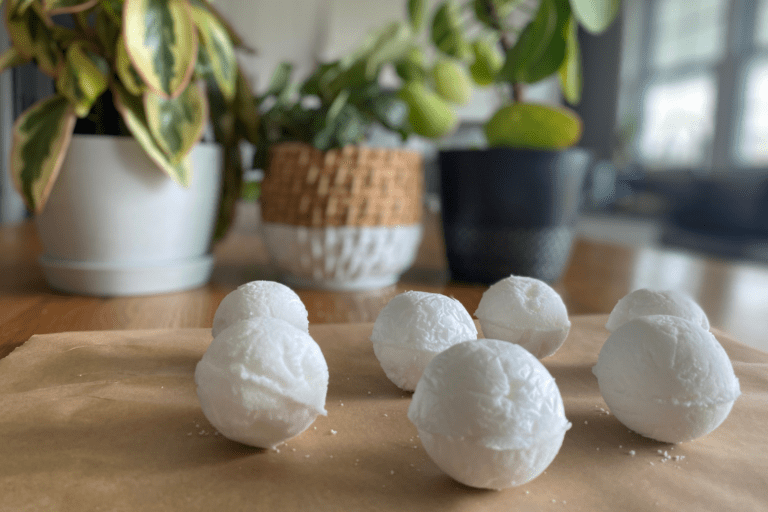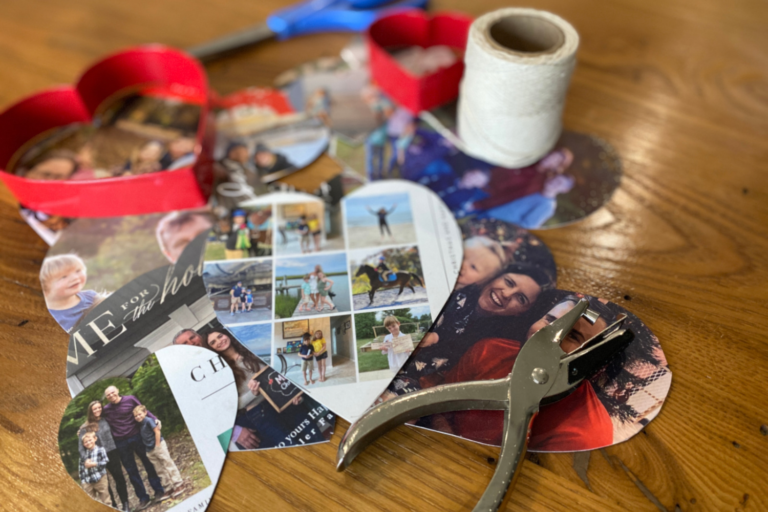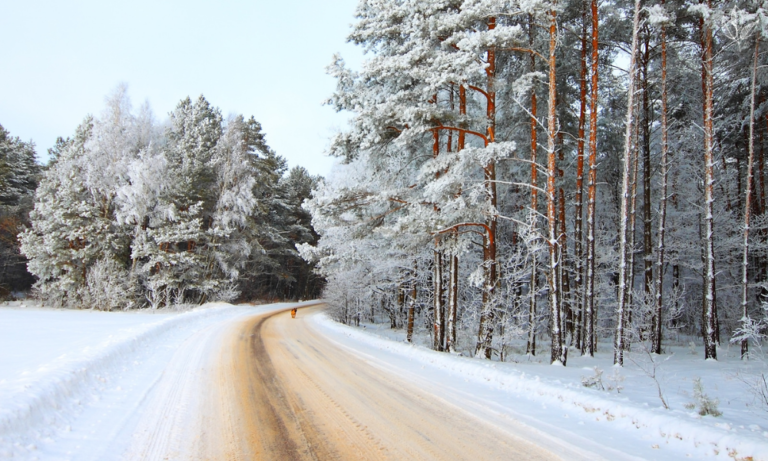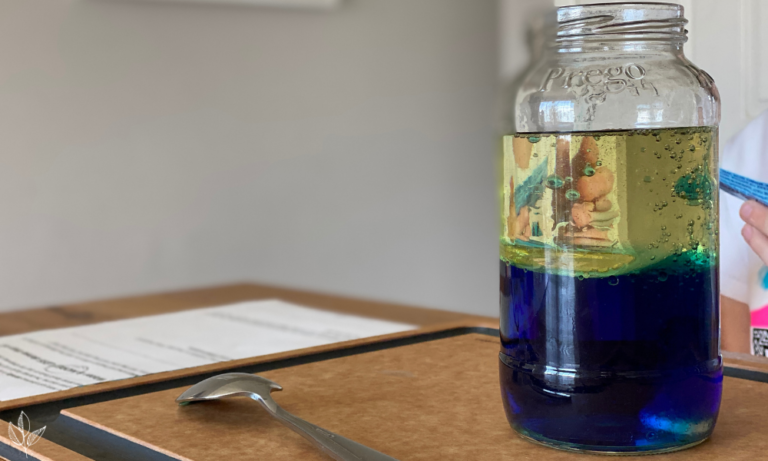Teaching Kids How to Grow Potatoes + FREE Printable
Want to teach your kids about reducing food waste while simultaneously growing some potatoes? Check out this simple science activity to identify and visualize the life cycle of a potato and learn how to grow your own scrumptious spuds!

You’re prepping for dinner. You open the bottom kitchen cabinet to pull out some potatoes and discover that they’re staring back at you!
Okay, so they’re not REALLY staring, but they have sprouted “eyes” – the common term for the little stem bud that develops when your potatoes are stored in conditions that will wake them from their dormant state (think warm, dark, and humid – quite possibly the exact description of your kitchen cabinet).
What do you do?
- Option 1: As long as the potatoes are still firm and aren’t green, you can simply remove the stem buds and carry on with your cooking plans.
- Option 2: You can capitalize on this excellent learning opportunity and teach your kids to grow their own food!
If you choose to do option 2, I’ve got you covered!
The Science Behind Growing Potatoes
Introduce this hands-on science activity with some background knowledge about the parts of a potato, as well as how a potato grows. Not sure how that works? No worries – download the free printable I’ve created for you by subscribing to my newsletter and then follow the simple instructions below!
Instructions for Free Potato Printable for Kids
- Grab that sprouted spud from your cabinet and download the free printable I’ve created for you about the life cycle of a potato, as well as the parts of a potato plant.
- One you’ve printed out the pages, have your learners cut out the images (with supervision if needed) on the first page.
- Tell them that they are going to learn about growing a potato. Show them the sprouted potato that’s in your kitchen as a starting point, then ask them to try and organize the images in a circle to depict the order in which the potato will grow. Use the image below for reference if needed.
- Once completed, have them describe their thought process to you. When they’ve told you their idea, provide them with positive feedback for their attempt, and reorganize their steps (if needed) and explain why you’ve changed their design. Use the image below as reference for the order!
- Next, hand them the second page of the printable and help them to identify the parts of a potato plant. Hint – the sprouted potato is called a tuber.
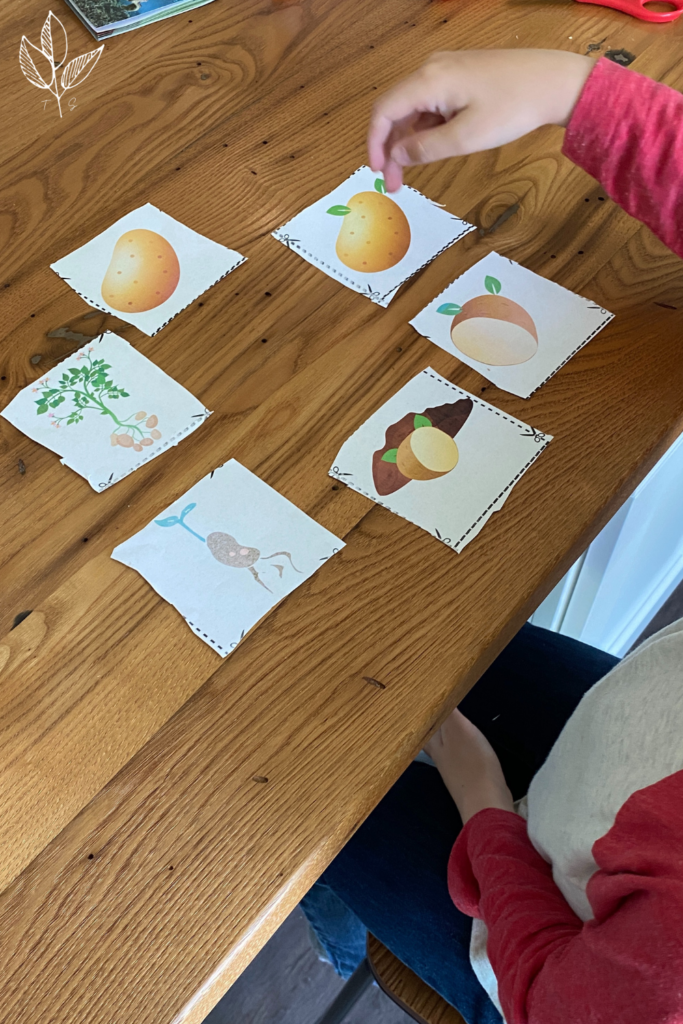



How to Grow Potatoes from Eyes with Kids
Now that you’ve guided your kids through the process of how a potato grows, it’s time to get their hands dirty! Here’s what you’ll need to do to successfully grow your own potatoes.
Instructions to Grow Your Own Potatoes:
- Cut your sprouted potato into pieces, making sure to have at least 2 eyes present in each piece that you plan to plant.
- Potatoes are resilient plants, and can grow in a large pot on your back porch, in a spot in your garden, or in a patch of ground in your backyard! Dig a hole deep enough so that the potato piece is about three inches below the top of the soil.
- Place the potato piece in the hole, with the eyes facing up towards the surface of the ground.
- Cover the sprouted potato with soil and water.
- In a few weeks, you should be able to see the leaves of your potato plant emerge!
- Depending on the climate in which you live, it will take approximately 3-5 months for the sprouted potato (also known as the mother tuber – such a cool name!) to create new potatoes that are ready to harvest. Within that time, you will want to make sure to mound soil on top of the potato plant every 1-2 weeks, to ensure that sunlight does not reach your growing tubers. Sunlight will activate the chlorophyll in the potatoes, causing them to turn green and become toxic when eaten.
- Not sure if your potatoes are ready to be harvested? Gently dig them up and see what you discover!


Growing Potatoes and the Importance of Avoiding Food Waste
As you guide your potato farmers through the process of planting their crop, make sure to discuss the benefits of avoiding food waste by using the sprouted spud to grow more food. By avoiding food waste you:
- Create food.
- Save money.
- Avoid the greenhouse gas emissions associated with the transportation of potatoes to your local grocery store.
- Avoid the production of greenhouse gases from the decomposition of the potato in a landfill.
Not to mention the thrill of growing your own food right in your own backyard or back porch!
If you find these printables helpful, please let me know in the comments below, or by snapping a picture of your learners in action and tagging me on Instagram @thoughtfullysustainable .

